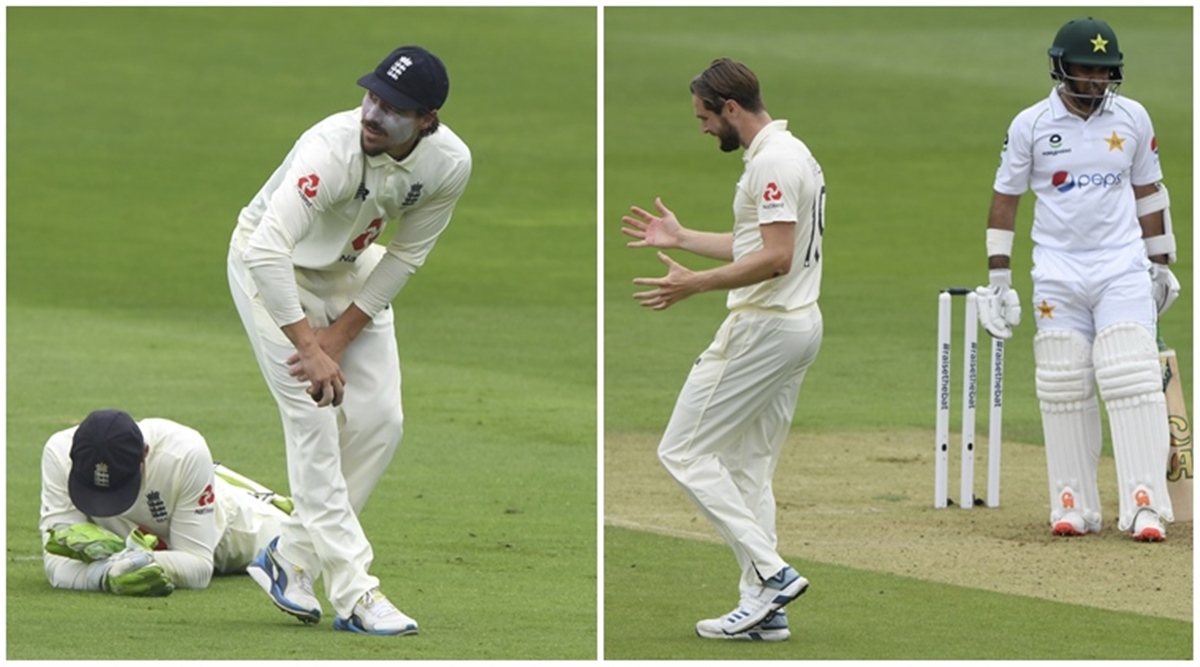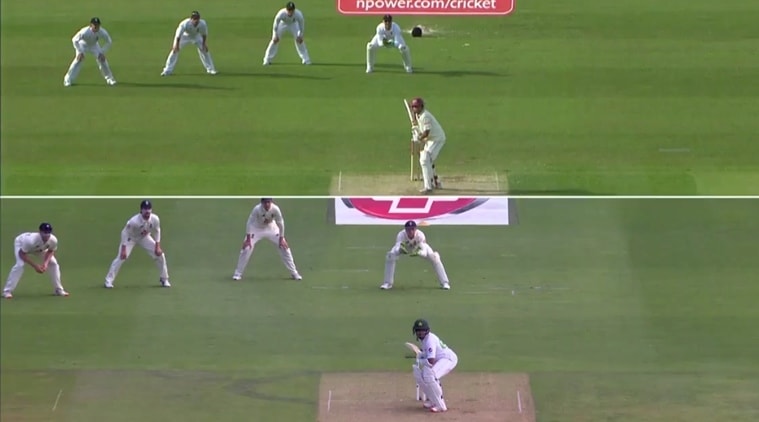 England's Rory Burns dropped a sitter off Chris Woakes. (AP)
England's Rory Burns dropped a sitter off Chris Woakes. (AP)England badly let themselves down at the start of Day 1 of the 2nd Test vs Pakistan at Ageas Bowl, Southampton on Thursday. Right from the beginning of the first session, the English slip cordon comprising Dom Sibley, Rory Burns, and skipper Joe Root looked all at sea whenever an edge came flying at them. James Anderson had trapped Shan Masood lbw off the 14th ball of the innings to leave Pakistan on 6/1 and under real pressure in the opening session, but the abysmal performance in the slips let them off the hook.
Broad & Woakes bear the brunt
In the third over of Pakistan’s innings, Abid Ali survived a scare (batting on 1) when he edged one to Sibley who put down a straightforward catch at third slip. The ball flew to Sibley’s left but he failed to latch on to it. That was the first stroke of luck.
Catch Drop (Abid Ali lucky batsman)#ENGvPAK pic.twitter.com/84SMVjuXcH
— #ENGvPAK #PAKvENG #ENGvPAK #CPLT20 #CPLT20 (@ICCcricInfo_U) August 13, 2020
Abid Ali was once again dropped off Chris Woakes in the 13th over of Pakistan’s innings. This time Rory Burns was the culprit, giving the right-handed batsman another reprieve on 21. A back of a length delivery that kicked off the surface got a thick outside edge to second slip where Burns went with his fingers pointing down — an awkward position for him — failed to hold on to the catch despite two attempts.
Jokes aside, England’s slip fielding is a genuine concern.
This is abysmal.#ENGvPAK pic.twitter.com/OmIBgSB2nO
— Nic Savage (@nic_savage1) August 13, 2020
In the last over before lunch, Broad once again drew the edge of Ali, who pushed at a scrambled seam delivery but was fortunate to have played at it with soft hands, not allowing the ball to carry to Burns. However, replays showed that Burns, standing at second slip, had gone back a few steps just a few deliveries earlier.
England’s slip catching nightmare is not new. It’s hard enough for a bowler to find the edge once, let alone twice, and to then see it get dropped merely adds to the frustration. This graphic from cricviz shows how poor England’s record has been in the slip cordon for the past two years.
Since the start of 2018, England only catch 73% of the slip catching chances that come their way. The only team in the world with a worse record is Bangladesh. #ENGvPAK pic.twitter.com/nfHZv73Irw
— The CricViz Analyst (@cricvizanalyst) August 13, 2020
Where is at all going wrong?
It is not like the opportunities which came England’s way were especially difficult or that the catches were dropped only at one position. Instead, they came at a perfect height, and were put down at first and second slip. So is the spacing between the slips the problem? “You have to argue whether England’s slips are too narrow,” Michael Atherton questioned from the comm box. Probably a more orthodox spacing and wide gaps could work for the Englishmen.
The Dom Sibley drop is a perfect example. Replays show he goes across Burns and in the end has to dive out of the way because Sibley has come across him. This might not have happened had they been wider. The picture below shows the difference between the positioning (back in 2007) and the present. While the first and second slip are more or less the same, it is the second and the third slip which is wider in the upper photograph and quite narrow below.
 This picture shows the difference in England’s slip positioning. (Twitter/screengrab)
This picture shows the difference in England’s slip positioning. (Twitter/screengrab)
Another reason could well be a lack of concentration and confidence. A lack in either of the two can be fatal. Dom Sibley got a hundred in the series against West Indies but did not bat well in the first Test against Pakistan. Burns is still looking for that elusive big score. So is the lack of form coupled with low morale resulting in these spilled chances?
One more aspect which comes in the picture is the positioning of the body — how quickly are the fielders getting up from their initial posture and whether they are falling short in their reaction time.
At this level of the game, there is no hiding or excuse. England’s slip catching statistics, over such a long period of time, point to something flawed in the system or the environment. The English think tank and their captain need to put their heads around it and sort it out before it is too late because even the modest teams can punish them hard.